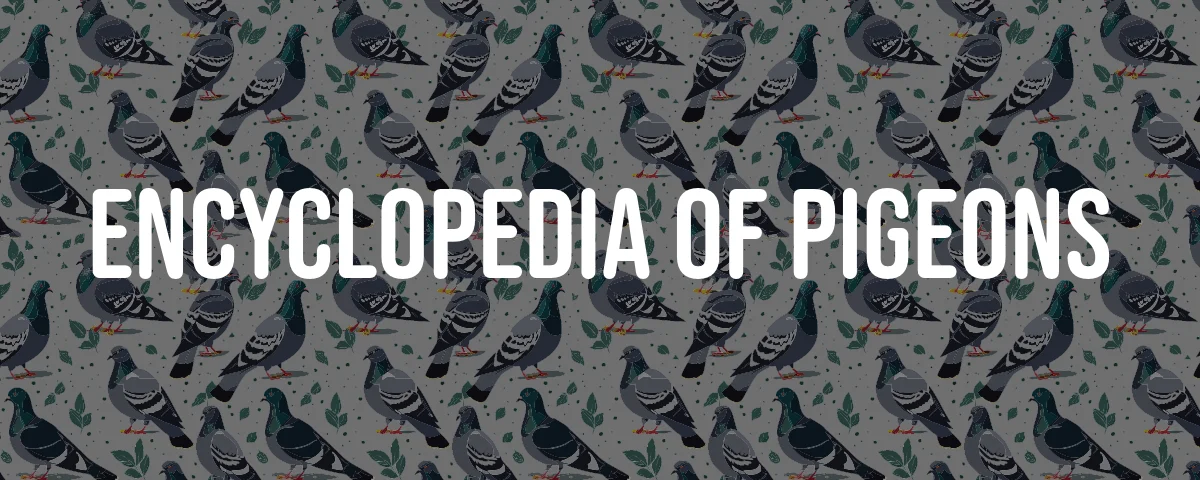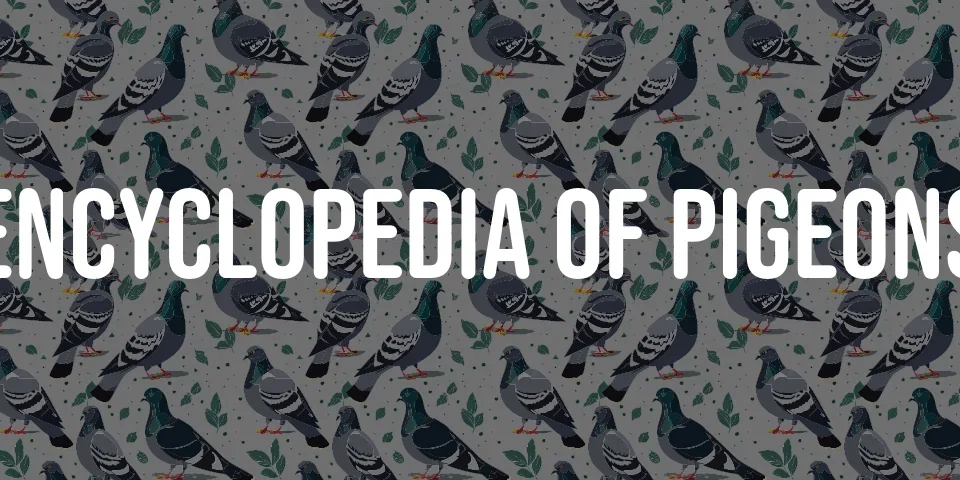Introduction to Montauban Pigeon
Once, in a sleepy, sun-soaked corner of southern France, the Montauban pigeon began its unlikely journey toward global renown. Not your average street-dweller or city park squatter, this bird boasts a lineage as meticulously crafted as a bespoke suit. Its roots reach deep into the soil of the Montauban region, a place where pigeon fanciers—imagine artists with feathers as their palette—dedicated lifetimes to perfecting a breed that would, in time, flutter its way into the hearts (and racing logs) of enthusiasts from Manchester to Minsk. It’s an odd combination—elegance paired with athleticism—but therein lies the Montauban’s peculiar charm: a bird that struts with the poise of a runway model yet sprints like a marathoner with something to prove.
What is a Montauban Pigeon?
Meet the Montauban: equal parts showpiece and athlete, with a family tree that reads like a roll call of columbiform nobility. Descended from the grand old Columba genus, kin to Columba livia—the wild rock dove that started it all—this pigeon is a parade of selective breeding at its finest. I’ve seen fanciers debate the subtle arch of a Montauban’s wing or the personality revealed in a curious tilt of the head.
What’s striking is its chameleon-like adaptability: these pigeons don’t just race (though they do, with style); they dazzle at exhibitions, and some even settle into the quieter role of companion—like the world’s most elegant housemate, minus the mess. Every feather, every quirk, is a love letter to generations of breeders who obsessed over speed, beauty, and that indefinable “something” that makes a pigeon more than just a pigeon.
History and Development in the Montauban Region
Picture a cluster of pigeon lofts nestled beside rolling vineyards, where breeders—part scientist, part gambler—hunched over ledgers, plotting the next great leap in avian achievement. In Montauban, the bird was more than just a hobby; it was a badge of local pride. Here, the pursuit wasn’t only about speed; it was about creating a bird that embodied the region’s spirit: strong, resilient, and, to be honest, a little showy.
Over years—and then decades—these breeders refined their flocks, setting standards so rigorous that the Montauban pigeon could never be mistaken for any other. The town itself became a magnet for pigeon people, a kind of mecca where tales of record-breaking flights and perfect feathering were swapped over afternoon espresso. This wasn’t just breeding; it was alchemy.
Spread and Popularity Across Europe
Europe has always had a soft spot for the underdog-turned-champion, and the Montauban pigeon fits that narrative perfectly. Once word spread—thanks in no small part to a handful of dedicated fans who traveled, traded, and talked up their birds at every opportunity—the breed’s reputation soared across borders.
People took notice, especially as these pigeons started racking up wins in long-distance races. It was as if Montauban pigeons possessed some secret—an extra gear, perhaps, or a sixth sense for home. Fanciers began to swap stories and birds, building a network that stretched from the French heartlands to every corner of the continent. Today, it’s difficult to find a serious European pigeon enthusiast who hasn’t heard of—or secretly coveted—a Montauban for their own loft.
Characteristics of Montauban Pigeon
If there’s such a thing as a showstopper in the world of pigeons, the Montauban wears the crown. No two birds are exactly alike—nature’s little rebellion against uniformity—but certain hallmarks persist: a body that strikes the right balance between sturdiness and grace, wings designed for both display and distance, and feathers so vividly colored they might as well be dipped in oil paints.
They carry themselves with the kind of poise you’d expect from an aristocrat at a garden party, yet beneath that calm exterior lies a physique built for the hard miles of competitive racing. Their patterns—sometimes bold, sometimes subtle, always captivating—turn heads at exhibitions. And while looks are half the story, their temperament seals the deal: sociable, unflappable, the sort of bird that makes even the most grizzled breeder crack a smile.
Fancy Pigeon Breed Attributes
Let’s drop the pretense: some pigeons are just plain beautiful. The Montauban has that in spades—broad-shouldered, sleek, with feathers that catch the light like stained glass. But beauty here isn’t skin-deep; these birds are companionable, too, more likely to sidle up for a treat than to spook at a shadow. Breeders adore this blend of charisma and calm, especially when the exhibition lights are harsh and the judges unforgiving.
I’ve watched Montaubans steal the spotlight at shows, their subtle posturing and gentle demeanor quietly outshining more boisterous breeds. There’s a reason they keep winning ribbons.
Quality of Appearance
Ever seen a Montauban fresh from a molt? It’s like watching a sports car emerge from a car wash: all shine, no dust, every curve on display. The variety of their colorways is a feast—smoky blues, coppery reds, patches and speckles that hint at lineage and luck. Judges and spectators alike are drawn to the details: a proud chest, the upright stance, the way sunlight skims across their sleek backs.
But here’s the catch—keep them healthy or you’ll lose the sparkle. Miss a week of proper care and those feathers dull, the posture slumps, and suddenly, last month’s star is just another bird in the crowd. It’s a fragile alchemy—beauty and vigor, always at the mercy of a keeper’s diligence.
Breeding and Care of Montauban Pigeons
Breeding Montaubans isn’t for the faint-hearted or the forgetful. You need an eye for detail, a nose for quality, and nerves of steel—plus, a notebook that’s never out of reach. Picking parents is an art: do you chase speed, beauty, or that je ne sais quoi that wins races and hearts? Some breeders fixate on performance records, others on the shimmer of a particular feather pattern. Both camps keep meticulous records, scribbling lineage and quirks in dog-eared ledgers fit for a detective.
Racing buffs might obsess over wing structure and muscle tone, while exhibition fans swoon over markings or symmetry (or deliberate asymmetry, if that’s the latest trend—I’ve seen judging fads come and go like Parisian fashion). No matter your focus, the basics remain: clean loft, good food, a little luck, and a lot of patience.
- racing types will argue for hours about stamina and wingbeat frequency,
- while show folks debate the merits of a particular shade or feather curl,
- and both sides agree: if you lose track of your records, you’re flying blind.
Without diligent care, even the most promising pair can fizzle. A clean loft isn’t just a nicety—it’s a shield against stress and disease, as vital as any vitamin supplement. A rich diet means glossy feathers, fertile eggs, and chicks that grow up strong instead of scrawny.
Breeding Techniques and Strains
There’s something almost mystical about pairing up pigeons. Some breeders swear by pedigrees, others rely on gut feeling, and a few make their choices based on a bird’s attitude in the morning sun. The goal? Birds that balance stamina, speed, and a certain indefinable je ne sais quoi.
Strains emerge almost by accident—one loft’s birds excel at distance, another’s win all the beauty prizes. Over time, these preferences solidify into lines: the racer’s Montauban, the showman’s Montauban, and a few unicorns that do both.
Without notes, though, all of this is just folklore. The best breeders jot down everything: who paired with whom, what the chicks looked like, which ones took to the air like rockets and which preferred to strut. Care isn’t an afterthought; it’s the secret sauce—clean loft, balanced feed, and a watchful eye for anything amiss.
- some obsess over distance and resilience,
- others chase after color and form,
- a few try for both and end up with something new entirely.
Loft Management and Health Concerns
It’s funny, but the inside of a pigeon loft tells you everything you need to know about its owner. A cramped, musty space? Expect nervous birds and endless trouble. A roomy, breezy loft? Happy, healthy Montaubans that greet you at the door. Proper management is more than cleanliness—it’s the difference between a champion and a cautionary tale.
Ventilation matters. I once visited a loft where the air was so thick with ammonia you could taste it—those birds never took home prizes. Cleanliness isn’t glamorous, but it stops disease in its tracks. Regular health checks (think of them as mini check-ups) catch issues before they bloom into disasters. Vaccines are the unseen armor, quietly protecting the flock from invisible foes.
- space: too little, and tempers flare; too much, and birds go wild,
- ventilation: keep the air moving, but not so drafty the birds shiver,
- cleanliness: the best-kept secret of every champion loft,
- observation: listen for coughs, watch for drooping wings,
- vaccines: boring, necessary, life-saving.
Put all these together and you have the makings of a dynasty—or at least a flock that’s the envy of the neighborhood.
Preventing Trichomoniases
Trichomoniasis—try saying that three times fast—has ended more than one breeder’s dreams overnight. Prevention is a game of vigilance and routine. Any new bird arriving in the loft? Quarantine, no exceptions. Clean, scrub, repeat—those corners you skip are where trouble lurks. And always, always, watch for odd behavior: a bird that’s suddenly listless or pecking at food without eating is sending you a silent SOS.
- isolate arrivals—think of it as a bird’s version of customs,
- scrub every surface like your reputation depends on it (because it does),
- keep your eyes peeled for anything off—better paranoid than sorry.
It’s a war of attrition, and diligence is your only weapon.
Montauban Pigeon in Pigeon Racing
In the cutthroat world of pigeon racing, the Montauban is the bird that shows up to the party in a tailored suit and leaves with all the medals. These aren’t just pretty faces—they’re endurance machines, bred for the long haul, with a knack for navigation that borders on supernatural. I remember watching a Montauban cross the finish line, wings pumping like pistons, eyes locked on home—pure poetry in motion.
Breeders don’t leave anything to chance. Training begins with baby steps: short hops, then longer flights, always raising the bar. The diet is a science unto itself—grains, supplements, the occasional secret ingredient whispered from one old hand to another. Recovery is just as crucial; a tired pigeon is a slow pigeon, and there’s no glory in second place. Every session, every meal, every moment is calculated to produce a bird that can not only finish, but finish first.
- short flights to build confidence,
- distance training for stamina,
- nutrition that would make a nutritionist jealous,
- careful rest and recovery—no shortcuts allowed,
- endless repetition, because greatness is built, not born.
The Montauban’s legend grows with every race—each win another feather in a cap that’s already overflowing.
Role in Long Distance Races
Let’s face it: not every pigeon is cut out for the marathon. Montaubans, though, seem to relish the challenge. Their secret? A mix of relentless drive, uncanny homing ability, and a physique that shrugs off fatigue. They’ll fly through wind, rain, even the occasional hawk ambush, eyes always set on that distant loft.
Selective breeding keeps sharpening these traits. I’ve seen lines where every youngster seems born knowing the way home, no matter how far they’re released. It’s part science, part magic, and entirely the result of generations of breeders refusing to settle for anything less.
Training and Recovery Techniques
No two trainers handle their birds the same way—some are drill sergeants, others more like doting parents. The best start small, coaxing their Montaubans into longer and longer flights, mixing in surprise challenges to keep things fresh.
After every tough session, recovery is king. The right feed: high-protein, rich in the stuff that builds muscle and mends wings. Rest: not just downtime, but the kind of deep, undisturbed sleep that lets a bird wake up ready to conquer the sky. Sometimes, after a particularly grueling race, you’ll see trainers practically coddling their birds—gentle massages, whispered encouragements, the works.
Get the mix right, and you’ll have a pigeon that not only survives the race, but dominates. Get it wrong, and you’ll be left wondering what could have been, staring at an empty perch and the distant sound of a winner’s coo.






